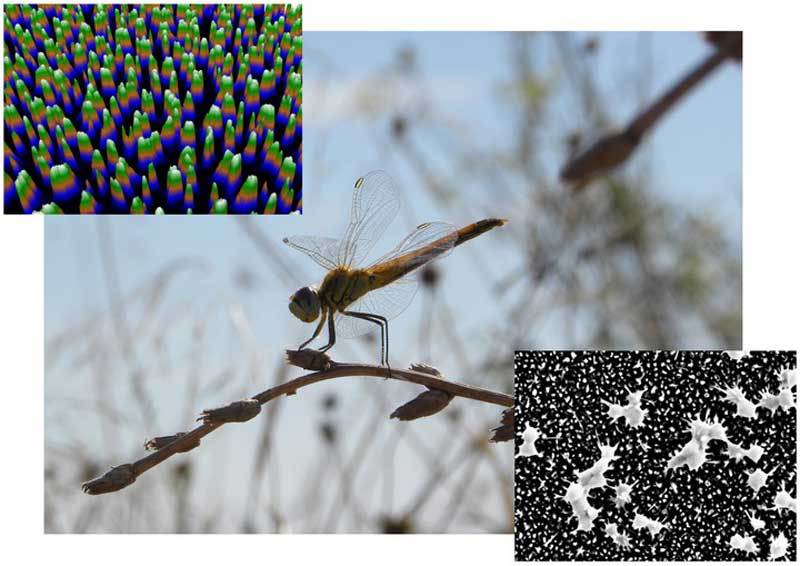Antibacterial power of black silicon inspired by cicada wings
 Earlier this year, we reported about a finding which revealed that physical structure of Psaltoda claripennis cicada wings can shred certain types of rod-shaped bacteria. After analyzing the surface, researchers at the Swinburne University of Technology used biomimicry to create a surface with similar properties. This nanosurface could lead to development of a new generation of nanostructured antibacterial materials.
Earlier this year, we reported about a finding which revealed that physical structure of Psaltoda claripennis cicada wings can shred certain types of rod-shaped bacteria. After analyzing the surface, researchers at the Swinburne University of Technology used biomimicry to create a surface with similar properties. This nanosurface could lead to development of a new generation of nanostructured antibacterial materials.
“Based on this discovery, we investigated other insects that may possess similar surface architectures that might kill more bacteria, in particular the deadly strains of the Staphylococcus aureus or golden staph bacterium”, said Elena Ivanova, microbiology professor at the Swinburne University of Technology.
Their search led them to the wings of the Diplacodes bipunctata (Wandering Percher dragonfly), whose spike-like nanostructure destroys both rod-shaped and spherical bacteria. Working with Saulius Juodkazis, Swinburne Professor of Nanophotonics, the team decided to mimic the surface structure of the dragonfly wing on black silicon (bSi) surface.
Accident discovered in an etching process in 1980s, bSi is an etched silicon with long narrow nanoprotrusions on its surface. Although it was originally used to create materials with very low reflectivity, Swinburne researchers revealed it also has bacterial killing potential.
Just like the wing surface of Wandering Percher dragonfly, researchers found that black silicon surface they etched creates a spike-like structure through the formation of clusters of multiple neighboring nanoprotrusions. Material analysis revealed that surfaces are tilted at an angle of 53 degrees. That means that nanopillars of are sharper and more distinct from one another, and approximately twice the height of those of the dragonfly wing.
This structure creates a mechanical bacterial killing effect without the need for any chemical compounds or reactions. On the other hand, the surface will require development of a process where those surfaces are cleaned after being exposed to bacteria.
“Both surfaces were found to be highly effective against a range of bacteria, as well as endospores. They exhibited estimated average bacteria killing rates of up to 450,000 cells per minute of exposure, for every square centimeter of available surface”, said Professor Russell Crawford, Dean of the Swinburne Faculty of Life and Social Sciences. “This represents an exciting prospect for the development of a new generation of antibacterial nanomaterials that could be applied to the surfaces of medical implants, making them far safer.”
What makes this discovery stand out among other anti-bacterial surface related research is the fact it is the first reported physical bactericidal activity of black silicon or indeed for any hydrophilic surface.
For more information, you can read the paper published in Nature Communications: “Bactericidal activity of black silicon” [1.7MB PDF].









Very interesting. I wonder about the cleaning process since the material isn’t water repellant. It’ll probably require some UV treatment.